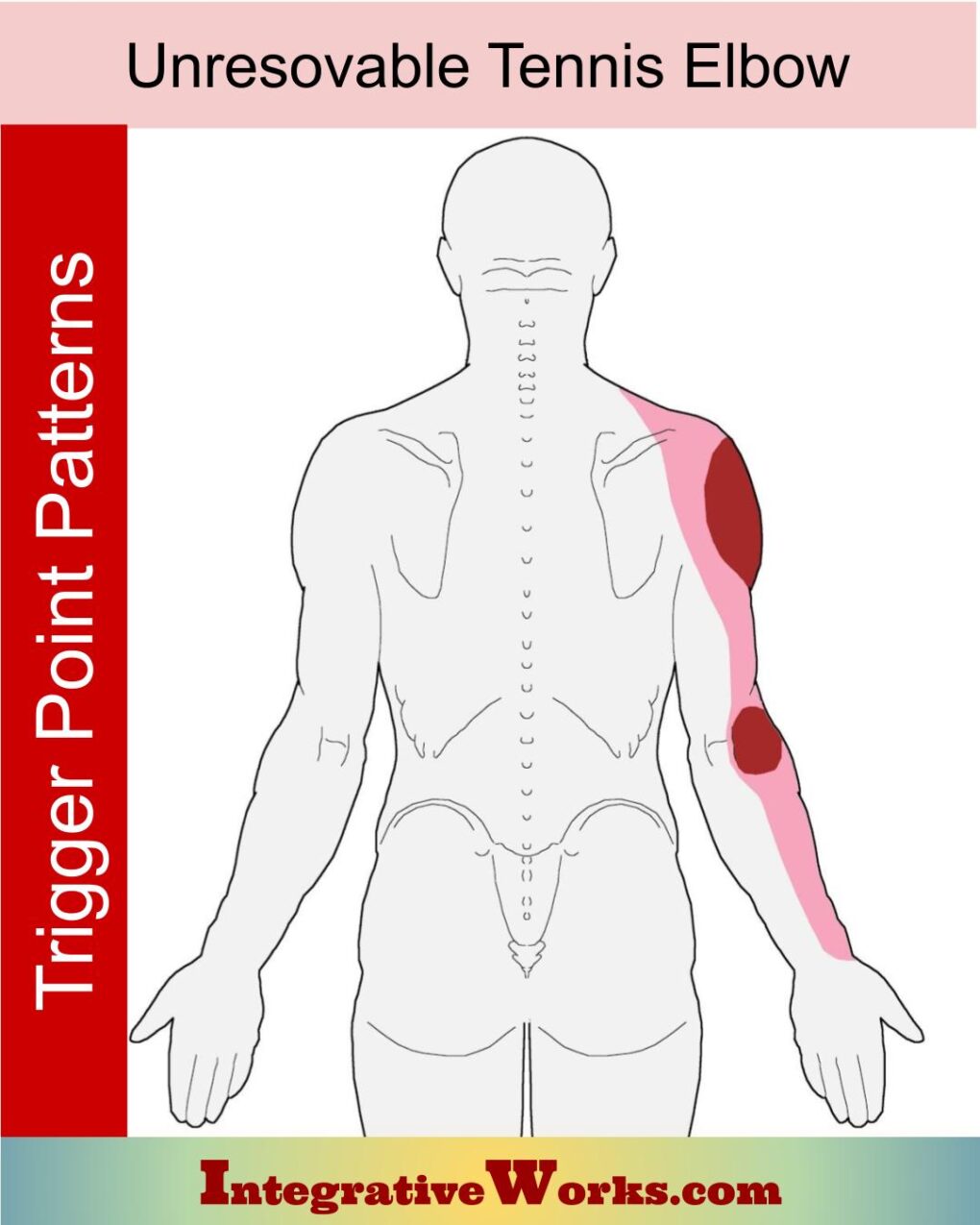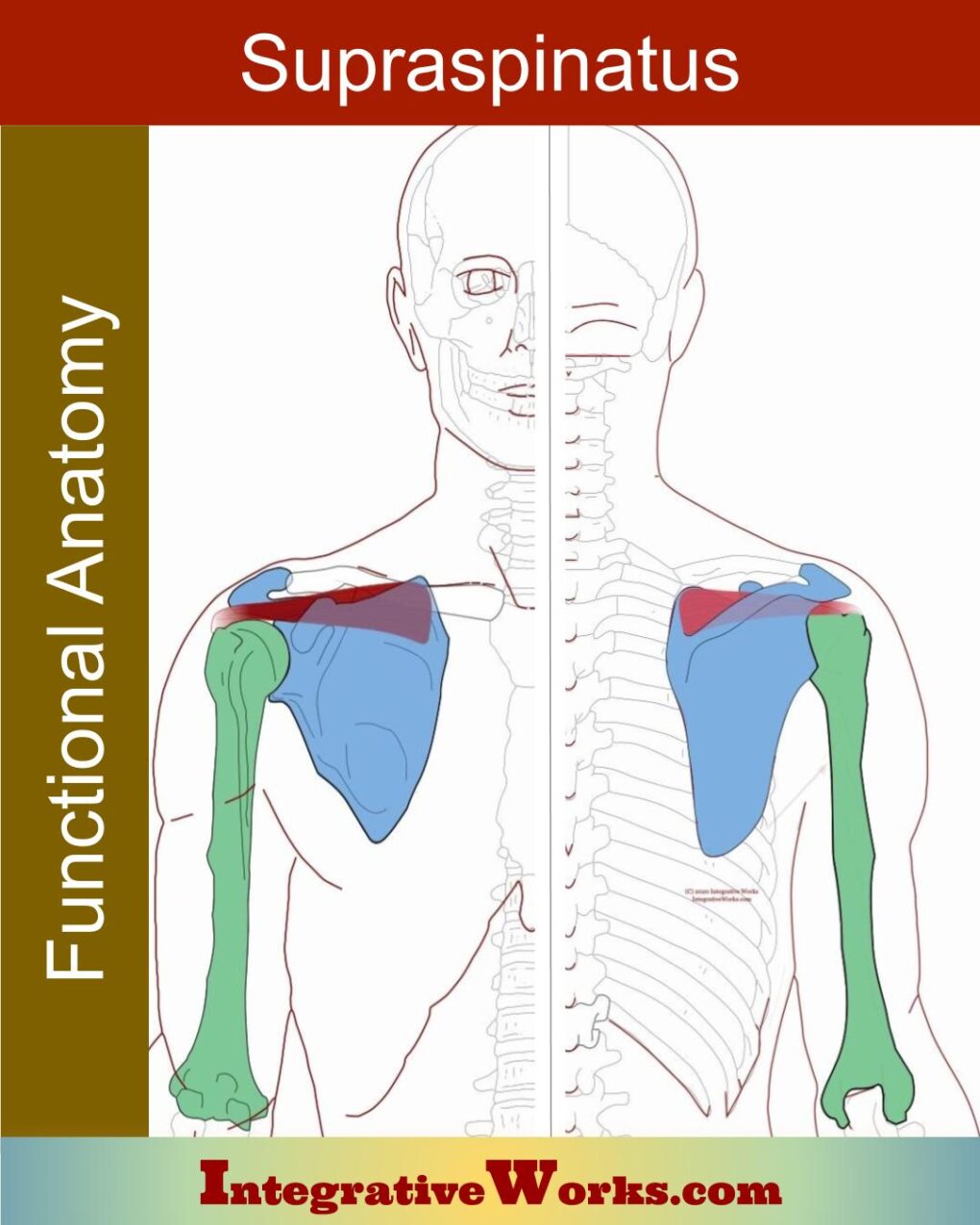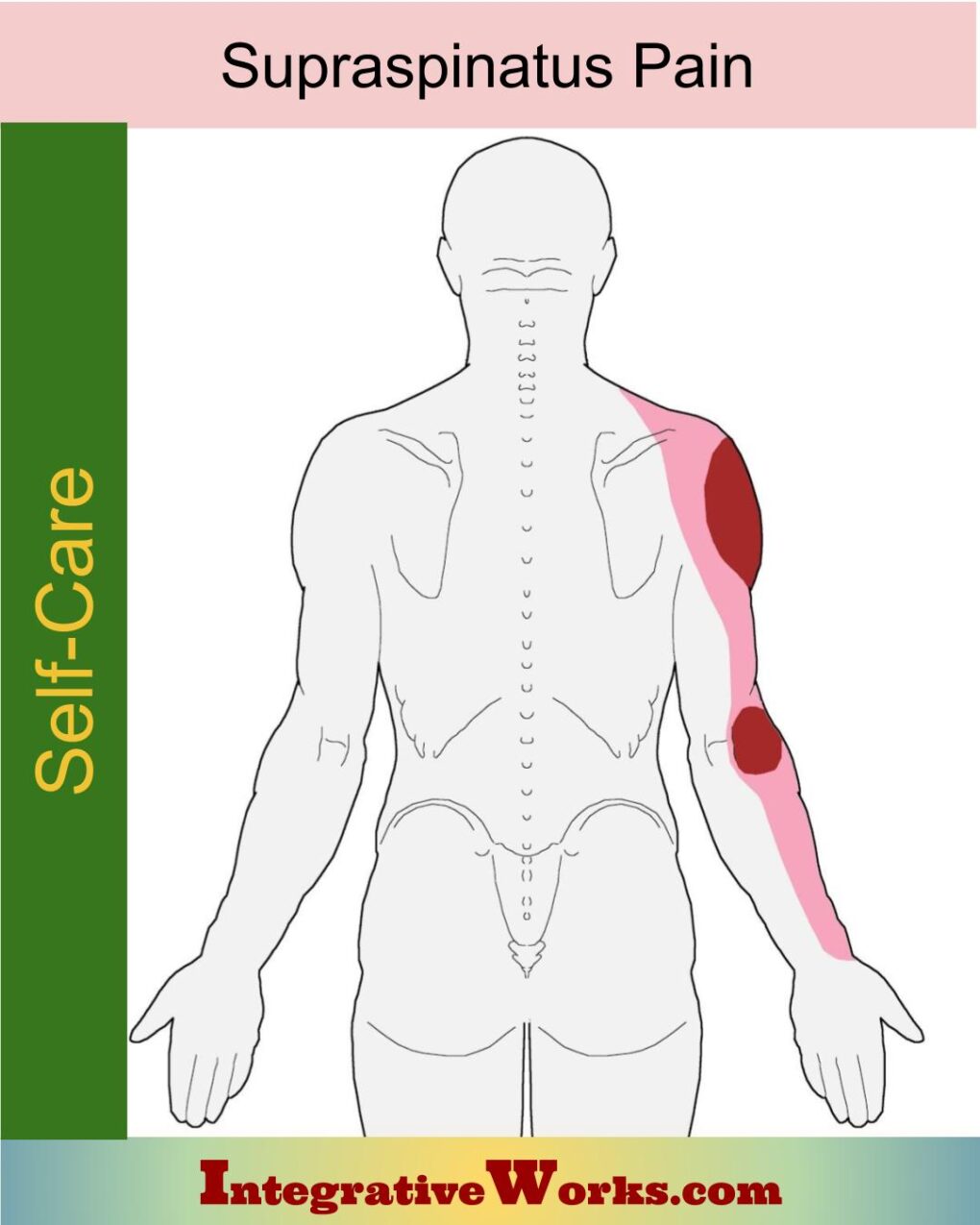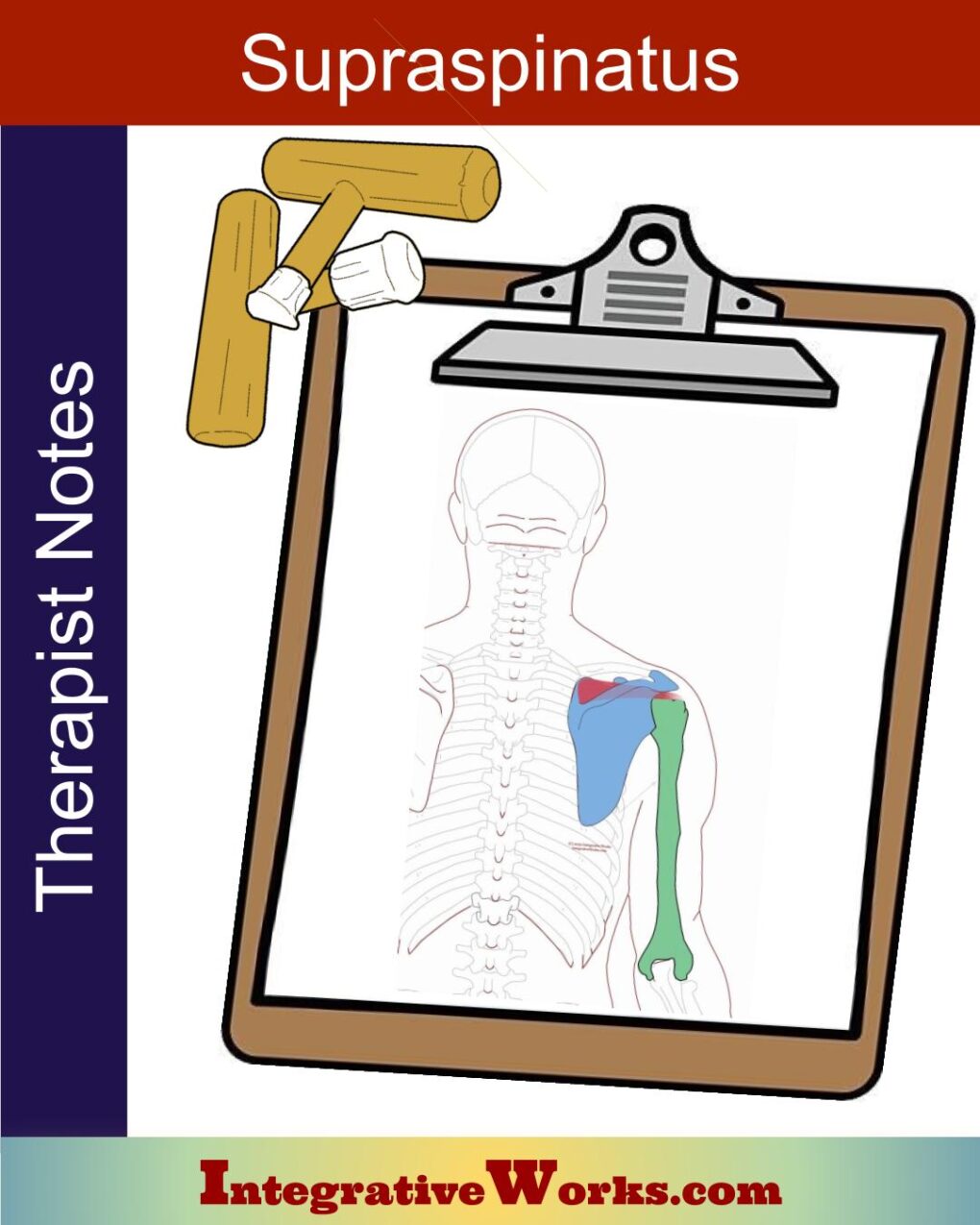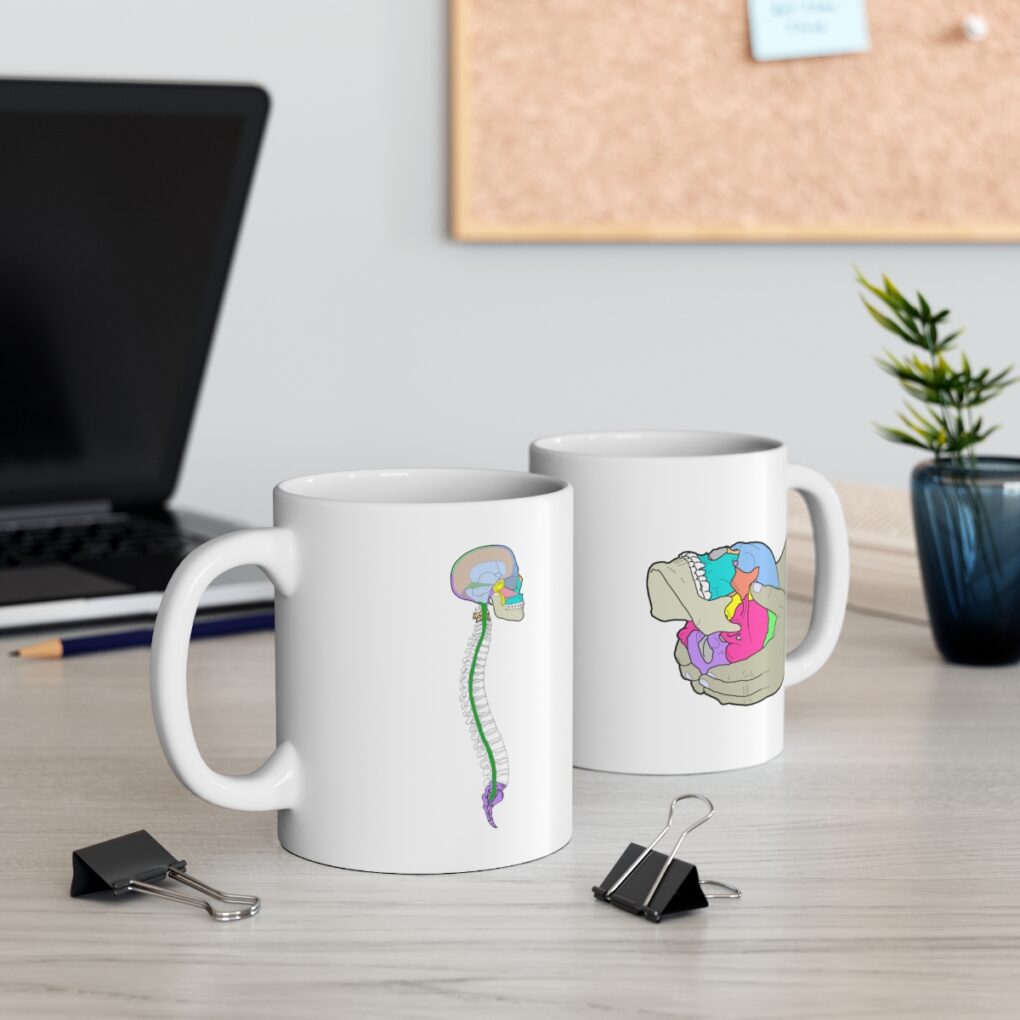Table of Contents
- How People Describe This Pain Pattern
- How You Activate and Intensify This Pain Pattern
- Self-Care – Getting Relief on Your Own
- Musculoskeletal Anatomy Behind Your Pain
- Therapy Notes for Massage and Bodywork
How People Describe This Pain Pattern
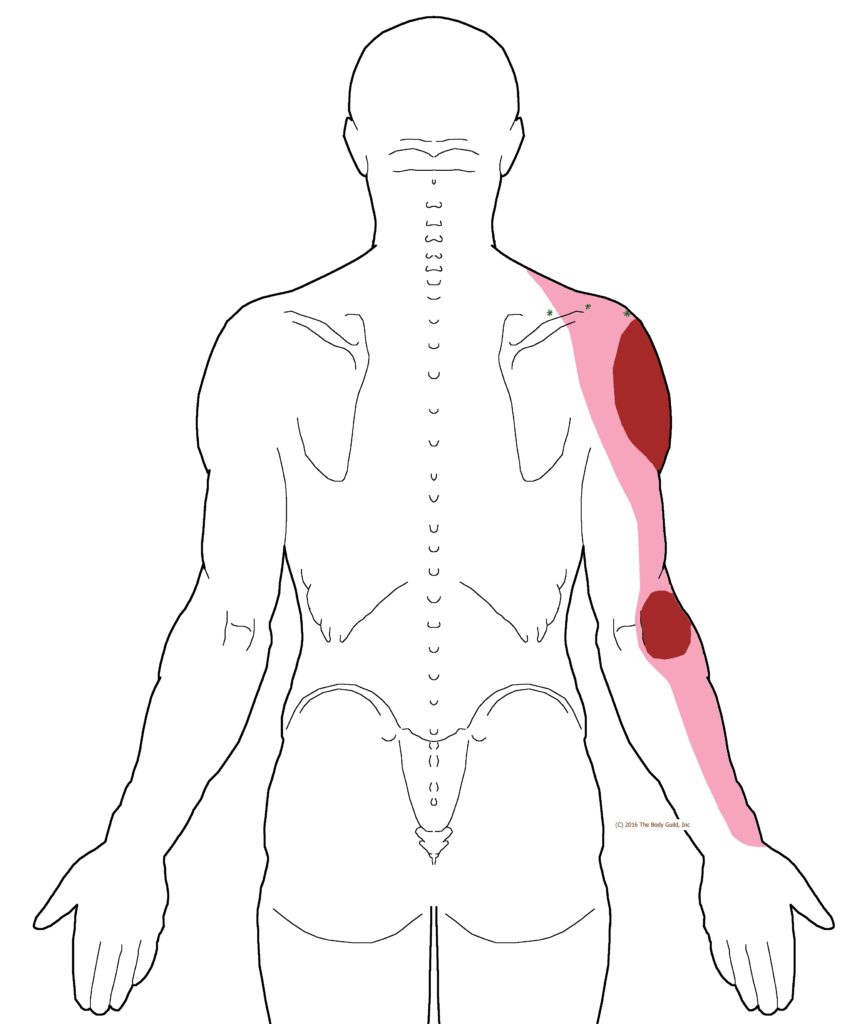
Elbow! …and…shoulder
People complain about persistent tennis elbow even though they’ve tried many different things around the elbow to get relief. However, it seems unresolvable. They usually don’t talk about the shoulder problem until I ask them if it has troubled them. When asked, tennis players often reveal that the elbow pain flares up when serving as this muscle helps lift the shoulder to serve. They see the shoulder as less worrisome as it is often sore. In this case, the elbow pain is sharper and more acute.
Clicking in Shoulder
When asked, they may talk about the other symptoms and causes related to supraspinatus, like a shoulder that clicks and hurts when reaching to brush their teeth, injury from a pulling dog, pain when carrying bags, etc.
When the primary complaint is the pain deep in the shoulder, the therapist usually quickly assesses and treats this muscle. As well, the secondary focus of elbow pain goes away.
How You Activate and Intensify This Pain Pattern
This is aggravated by activities that lift the arm out to the side, especially when the movement is heavy, jerky, or sustained. This might include:
- lateral raises, deadlifts, and other weight training with weights in the hands and out to the side
- Carrying suitcases, bags of dirt, concrete blocks, groceries, and trash
- Serving the ball and overhead shots in tennis
This is also aggravated by activities that jerk the arm, especially down:
- dog on a leash
- holding the strap on public transportation
- jerking to get a heavy suitcase on the bed
The shoulder is particularly ripe to get injured when jerking the suitcase onto the bed. Often people have already strained and overworked this muscle by carrying bags all day.
The Musculoskeletal Anatomy Behind Your Pain
Musculoskeletal Anatomy
This post on anatomy contains standard information about the origin, insertion, function, and innervation of muscles. Additionally, it includes information on functional considerations and anomalies.
Find Related Posts
Anatomy posts have a grid of all related posts. This includes posts on pain patterns, self-care, therapy notes, NMT protocols, cranial techniques, and cases.
Getting Relief on Your Own
Clinically Proven
Self-Care Strategies
Self-Care Posts have common sections to make them easy to follow and understand:
- Activities to Avoid or Change
- Strategies for Quick Relief
- Stretches and Exercise for Longer-Lasting Relief
- Yoga Corner
Therapy Notes for Massage and Bodywork
Better Bodywork
Through Shared Expertise
Therapy Notes provide details for cranial, spinal, and local joint work. These notes also link to a traditional neuromuscular protocol.
By treating integrative components first, direct work on the muscle becomes less intense while providing longer-lasting relief.
Support Integrative Works to
stay independent
and produce great content.
You can subscribe to our community on Patreon. You will get links to free content and access to exclusive content not seen on this site. In addition, we will be posting anatomy illustrations, treatment notes, and sections from our manuals not found on this site. Thank you so much for being so supportive.
Cranio Cradle Cup
This mug has classic, colorful illustrations of the craniosacral system and vault hold #3. It makes a great gift and conversation piece.
Tony Preston has a practice in Atlanta, Georgia, where he sees clients. He has written materials and instructed classes since the mid-90s. This includes anatomy, trigger points, cranial, and neuromuscular.
Question? Comment? Typo?
integrativeworks@gmail.com
Follow us on Instagram

*This site is undergoing significant changes. We are reformatting and expanding the posts to make them easier to read. The result will also be more accessible and include more patterns with better self-care. Meanwhile, there may be formatting, content presentation, and readability inconsistencies. Until we get older posts updated, please excuse our mess.

